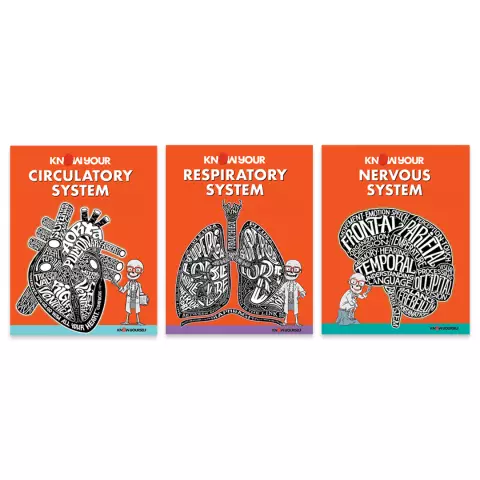- Author Rachel Wainwright [email protected].
- Public 2023-12-15 07:39.
- Last modified 2025-11-02 20:14.
Herpes in children
The content of the article:
- Causes and risk factors
- Forms of the disease
- Symptoms of herpes in children
- Herpetic infection of newborns
- Diagnostics
- Treatment of herpes in children
- Potential consequences and complications
- Forecast
- Prevention
Herpes in children is one of the most common chronic viral infections, with an exacerbation of which characteristic blister eruptions appear on the skin and mucous membranes.

Source: agushkin.ru
Many parents believe that the appearance of herpes on the lips of a child is just a symptom of a common cold and do not go to the doctor. In fact this is not true. Indeed, a herpetic infection can be latent for a long time and manifest itself as episodic rashes of blisters on the skin. However, a significant decrease in the activity of the cellular link of immunity, due to a variety of reasons, can lead to dissemination of the pathogen with damage to internal organs, peripheral and central nervous systems.
Causes and risk factors
The causative agents of herpes simplex in children are viruses of the herpevirus family (Herpetoviridae). In the medical literature, about 100 types of herpes virus are described, but of them only 8 types are pathogenic for humans:
- The most common type of virus. Causes the appearance of vesicular rashes on the mucous membrane of the oral cavity, near the mouth and wings of the nose.
- It is somewhat less common than the herpes simplex virus type 1. Affects the mucous membranes of the genitals. In some cases, it becomes the cause of the development of herpetic stomatitis and herpetic sore throat.
- Another name for this type is Varicella Zoster. With the initial infection, the child develops chickenpox. In adolescents and adults who have previously had chickenpox, this type of virus causes shingles.
- Another name is the Epstein-Barr virus. It is capable of causing infectious mononucleosis (Filatov's disease). In addition, infection with this type of herpesvirus leads to a significant weakening of immunity, as a result of which the child becomes susceptible to infectious diseases, as well as exacerbations of chronic somatic pathologies. In addition, there is data on the oncogenic activity of the Epstein-Barr virus, in particular, the development of certain types of lymphomas is associated with it.
- Another name is cytomegalovirus. This type of herpes viruses causes the development of cytomegalovirus infection, which is especially dangerous for pregnant women, as it can cause serious abnormalities in the development of the fetus.
- This type of herpes in children causes sudden exanthema (pseudo-rubella, roseola), the main symptom of which is the appearance of small pink papules on the skin. The rash may be preceded by an increase in body temperature, but without any respiratory symptoms.
Herpes viruses type 7 and 8 have been discovered relatively recently and are still not well understood. Virologists suggest that they can provoke the development of depression, chronic fatigue syndrome, and, possibly, some malignant neoplasms.
The term "herpes infection" is traditionally applied to infectious processes caused by herpes simplex virus types 1 and 2 (HSV, herpes simplex virus, herpes simplex virus).
Herpetic infection is a typical anthroponosis, that is, an infectious disease, the causative agent of which, in natural conditions, parasitizes exclusively in the human body.
The source of infection is a sick (infected) person. Most often, herpes in children is transmitted by airborne droplets. Less common are the contact-household and transplacental transmission of infection.
The susceptibility to herpes in children is very high. According to statistics published by WHO, in European countries and the United States, over 80% of children over the age of 5 years are infected with herpes simplex virus type 1 or 2.

Source: alphr.com
Forms of the disease
Depending on the activity of the pathological process and the degree of its spread, several forms of herpes are distinguished in children:
- local;
- disseminated;
- latent;
- herpes infection of the newborn.
Symptoms of herpes in children
Herpes in children is of a chronic recurrent nature. Exacerbations occur with varying frequency, but usually occur 1-3 times a year. The factors provoking relapses are any diseases and conditions that weaken the child's immunity (ARVI, otitis media, pneumonia, increased insolation, hypothermia, etc.).
The clinical picture of an infectious disease caused by herpesvirus is determined by its form. In the latent form, there are no symptoms of herpes in children; the presence of infection can only be detected by laboratory tests.
With the local form of herpes in children, children have lesions:
- skin (herpetic dermatitis, Kaposi's eczema herpetiformis, herpes zosteriform, ulcerative necrotizing dermatitis);
- mucous membranes of the oropharynx (gingivostomatitis, herpetic sore throat);
- mucous membranes of the upper respiratory tract (catarrh of the respiratory tract, laryngitis, pharyngitis);
- eye (conjunctivitis, keratitis, iridocyclitis, chorioretinitis, uveitis, optic neuritis);
- genitals (urethritis, balanoposthitis, vulvovaginitis).
Herpetic skin rashes are mainly localized on the red border of the lips, cheeks, wings of the nose. Their appearance is usually preceded by prodromal phenomena:
- slight general malaise;
- slight chills;
- itching, burning in the area of the future rash.
Erythema foci appear on the skin, and then small bubbles appear in their place, filled with transparent contents, which gradually becomes cloudy or becomes hemorrhagic. After opening the vesicles, painful erosion forms in their place, which subsequently becomes covered with crusts that fall off after a few days.
Herpes rash on the child's body can be located along the peripheral nerves. In this case, a condition called herpes zoster or shingles develops. It should be noted that in children, especially young children, such a course of herpes infection is extremely rare and occurs only in those who have previously had chickenpox.

Source: herpes911.ru
Lesions of the oral mucosa are manifested by symptoms of recurrent herpetic stomatitis. With an exacerbation, the disease is often accompanied by symptoms of general intoxication (weakness, headache, fever). Multiple vesicles appear on the mucous membrane of the oral cavity, after opening of which, sharply painful and long-term (up to 15 days) healing erosions remain.
The appearance of herpes in a child's throat (on the back of the pharynx and tonsils) indicates the development of herpetic sore throat.
Herpes in children can also proceed as an acute respiratory infection. In this case, there are no characteristic rashes on the skin and mucous membranes, and the disease proceeds with a clinical picture typical of ARVI.
Genital herpes in children and adolescents manifests itself as general (regional lymphadenitis, intoxication, fever) and local (appearance of vesicles on the surface of the genital organs) symptoms.
Herpetic eye infection is most often manifested by conjunctivitis and / or keratitis. The defeat of the posterior parts of the eyeball is rare.
Herpetic infection of the central nervous system can proceed either as encephalitis or as serous meningitis.
In visceral forms of herpes, children develop a clinical picture characteristic of an inflammatory disease of the affected organ (nephritis, enterocolitis, esophagitis, pneumonia, hepatitis).
Disseminated (generalized) herpes infection occurs with damage to the nervous system and internal organs.
Against the background of an immunodeficiency state, for example, in children with HIV infection, a toxic-septic state may develop due to generalized multiple organ pathology.
Herpetic infection of newborns
As a special variant of the course of the infectious process, herpes infection of newborns is distinguished in a separate form. Infection of newborns with herpes occurs at the time of their passage through the infected birth canal of the mother (80%) and transplacentally (20%). The risk of developing clinically manifest forms increases with a prolonged anhydrous gap and the use of delivery instruments that violate the integrity of the skin. About 70% of all reported neonatal herpes infection comes from mothers with latent herpes. The child is most at risk of infection when the mother first becomes infected during pregnancy (one month before delivery).
The onset of herpes infection of the newborn occurs during the first month of life, usually in the first two weeks, in one of the following clinical forms:
- Severe disseminated infection. The pathological process involves the skin, mucous membranes of the mouth and eyes, the central nervous system, lungs, liver. Thrombohemorrhagic syndrome joins. The mortality rate of this form is 50-80%.
- Common mucocutaneous changes (keratitis, stomatitis, dermatitis). The prognosis for this form of herpes in children of the first month of life is determined by the severity of bacterial superinfection. Mortality can reach 30%.
- Damage to the central nervous system. It manifests itself with symptoms of viral encephalitis. The mortality rate reaches 80%.
Intrauterine infection of the fetus with the herpes virus can lead to the formation of congenital malformations associated with the development of residual phenomena of the transferred herpes infection (hydrocephalus, microcephaly, porencephaly).

Source: netderm.ru
Diagnostics
In the process of diagnosing herpes in children, the following laboratory tests are used:
- traditional isolation of the virus in cell culture;
- accelerated method of virus cultivation, followed by the use of monoclonal antibodies to indicate antigens;
- methods of molecular hybridization and PCR (detection of herpes virus DNA in the studied culture);
- detection of antibodies to the herpes virus (ELISA, immunoblotting).
In some cases, herpes in children requires differential diagnosis with the following diseases:
- shingles;
- genital ulcers and gingivostomatitis of a different etiology;
- medicinal dermatitis;
- dermatitis herpetiformis;
- chicken pox.
Treatment of herpes in children
Modern methods of drug treatment of herpes in children do not allow for complete recovery. Therefore, the main goal of therapy is to eliminate the clinical manifestations of the disease, suppress the activity of the virus and increase immunity, which makes it possible to achieve long-term remission. For this, antiviral agents, interferons, immunostimulants are used. With severe pain and / or an increase in body temperature, non-steroidal anti-inflammatory drugs are prescribed.
Acyclovir (Gerpevir) is most often used as an antiviral drug for herpes in children. It can be applied both locally (in the form of an ointment) and systemically (tablets, injections), and in combination (local and systemic treatment at the same time).
Interferons not only suppress the activity of viruses, but also prevent the further spread of infection, preventing the virus from infecting new areas of the skin and mucous membranes, and internal organs.
Immunostimulating drugs enhance immunity and thereby contribute to the transition of infection to a latent course, to achieve long-term remission.
With frequent exacerbations of herpes in children, the child is referred for consultation to an immunologist, as this is evidence of a dysfunction of the immune system.
Potential consequences and complications
Complications of herpes are most often observed in children during the first months of life, as well as with a significant decrease in immunity, which may be due to various reasons. The most common complications of herpesvirus infection include:
- bacterial superinfection of the skin and internal organs;
- thrombohemorrhagic syndrome;
- swelling of the brain;
- cardiovascular insufficiency;
- Kaposi's herpetiformis eczema.
Forecast
The prognosis for local forms of herpes in children is favorable. It significantly decreases with the generalization of the infectious process, as well as with herpes infection of newborns.
Prevention
To prevent herpes, it is necessary to ensure that children carefully follow the rules of personal hygiene, so that they do not use other people's things. The child should dress for the weather, should not be allowed to overheat, or hypothermia, or prolonged exposure to the sun.
In order to prevent the development of herpes infection in newborns, it is recommended to deliver pregnant women with genital herpes by cesarean section.
To reduce the frequency and duration of herpes recurrence, it is necessary to carry out activities aimed at strengthening the child's immune system:
- rational nutrition, corresponding to age characteristics;
- hardening procedures;
- regular walks in the fresh air;
- careful adherence to the daily routine;
- physical activity.
If necessary, it is recommended to carry out timely vaccination of the child against influenza and other infectious diseases, during epidemiological outbreaks of acute respiratory viral infections, put an antiviral ointment (for example, oxolinic) in the nasal passages or bury an interferon solution (Nazoferon). Reducing the incidence of respiratory and other infectious diseases, as well as general strengthening measures, significantly reduce the risk of recurrence of herpes infection in children.
YouTube video related to the article:

Elena Minkina Doctor anesthesiologist-resuscitator About the author
Education: graduated from the Tashkent State Medical Institute, specializing in general medicine in 1991. Repeatedly passed refresher courses.
Work experience: anesthesiologist-resuscitator of the city maternity complex, resuscitator of the hemodialysis department.
The information is generalized and provided for informational purposes only. At the first sign of illness, see your doctor. Self-medication is hazardous to health!






